Guernsey is a small island off the coast of France with a fascinating culture and incredible scenery. While the island is quite famous for its dairy products, there’s much more to it than meets the eye. You can tour World War II attractions, explore castles, or take a stroll on the beach here. Spring even arrives four weeks earlier on Guernsey than it does on Britain’s mainland, making it ideal for a pre-summer vacation.
We here at Road Affair understand that creating the perfect itinerary for your holiday can be difficult, as you don’t want to miss out on any fantastic attractions. Well, we don’t want you to miss out either, which is why we’ve carefully crafted a list of the best things to do in Guernsey. Whether you’re planning a family holiday, a romantic retreat, or a solo trip, you’ll find the best attractions for your vacation below. So, what are you waiting for? Start scrolling!
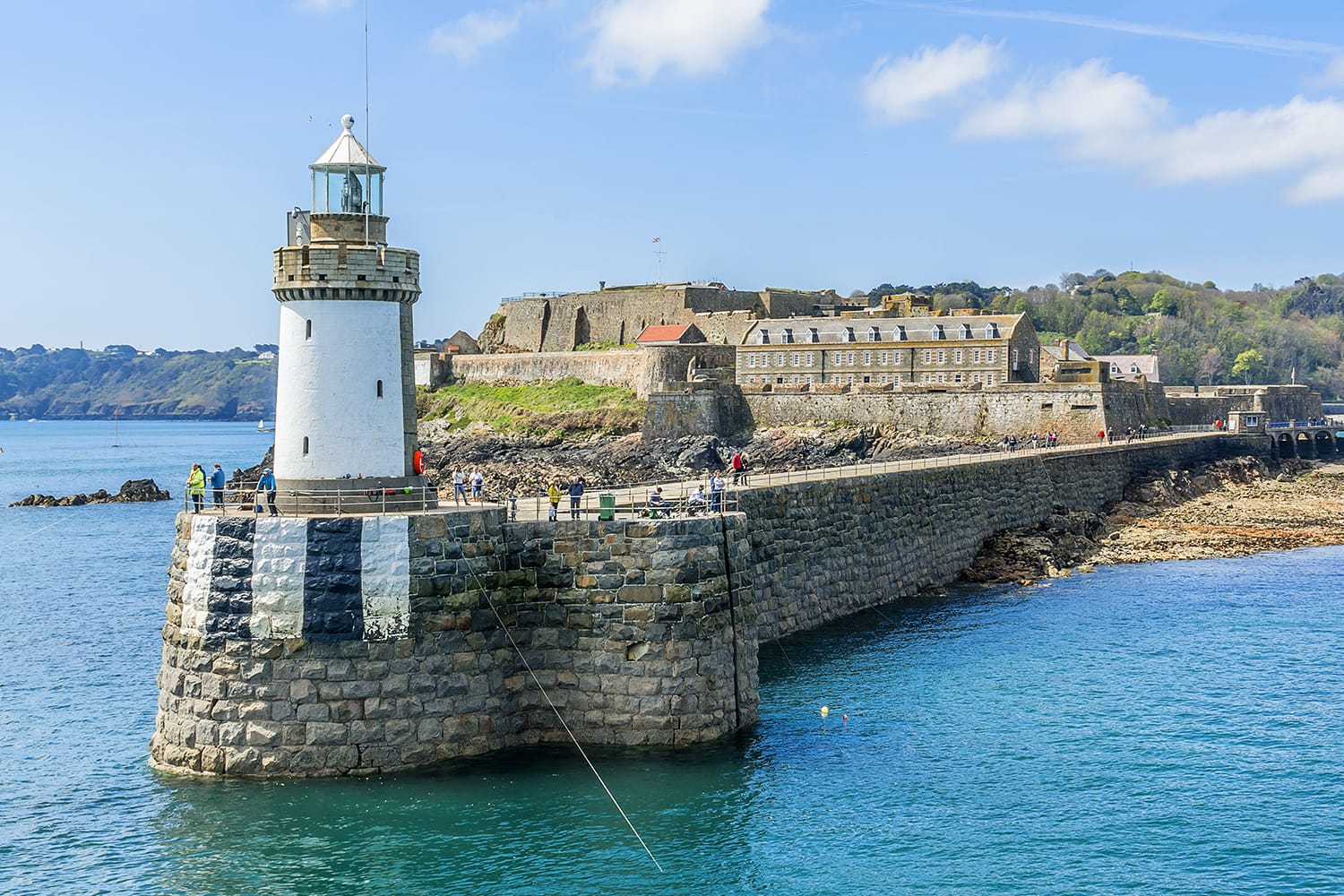
Learn About the History of Guernsey at Castle Cornet
First up on our list is undoubtedly the most popular attraction on the island. Castle Cornet sits perched on the mouth of St. Peter Port, the island’s capital, and boasts four museums that outline the island’s military history and the castle’s history as a stronghold.
At about 800 years old, Cornet is quite young compared to other European castles. However, it played a massive role during the Allied forces’ liberation attacks in May of 1945. In fact, if you’re planning a vacation to the island in early May, make sure to visit the castle on May 9. This is Liberation Day, when the island erupts into celebration and Castle Cornet sets off tons of fireworks.
The castle is quite large, so plan about three hours for your visit. Get there as early as possible to catch the free guided tour at 10:30 a.m. The tour ends just in time for you to see the 12 p.m. gunfire show, with gunners dressed up in 19th-century costumes. After the tour and show, enjoy a bite to eat at the on-site cafe before heading to the museums to see various artifacts. You can also wander through four lush gardens on the grounds.
Castle Cornet is open every day from the end of March until the end of October.
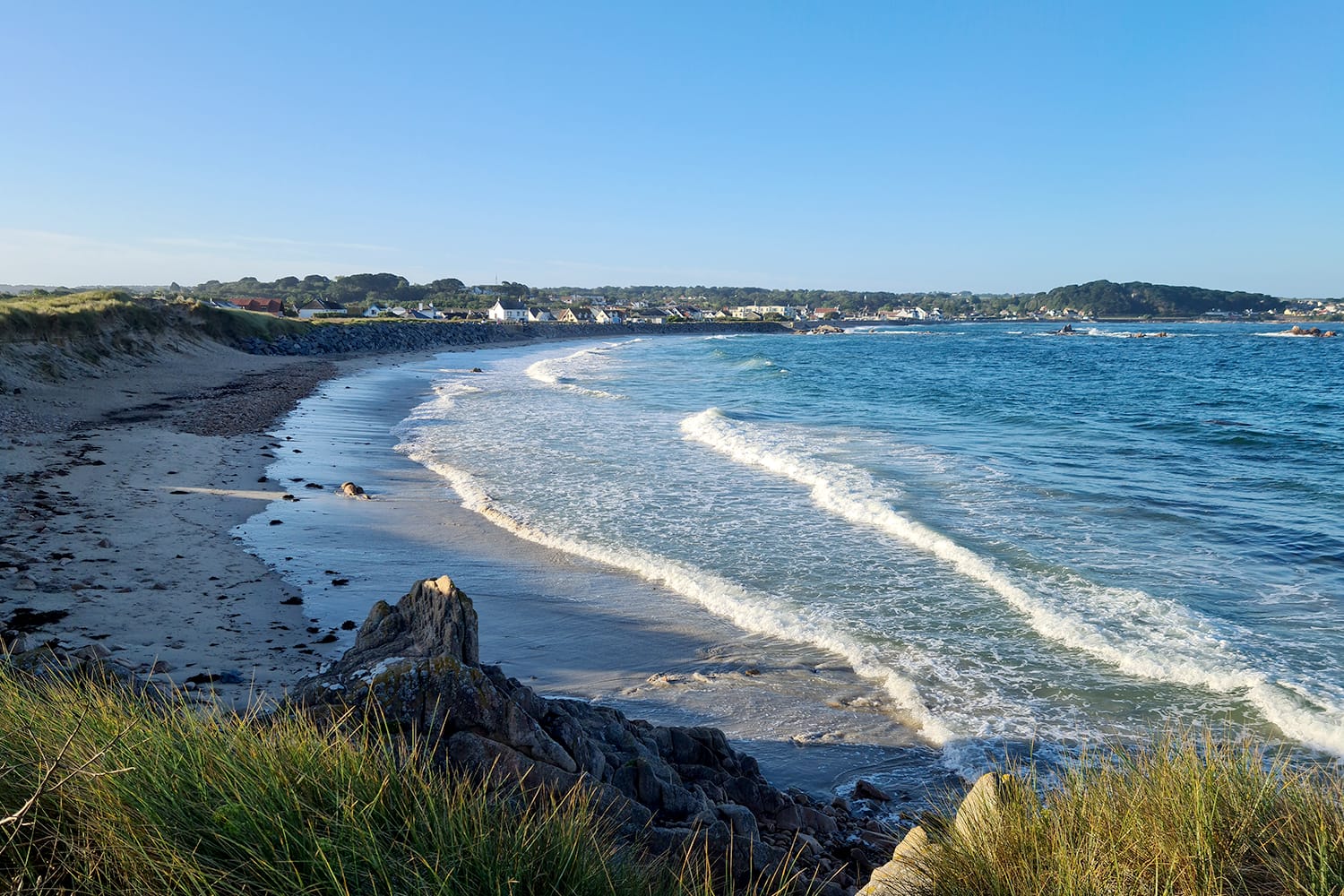
Spend a Day at Grandes Rocques Beach
If you’re wondering what to do in Guernsey on a hot summer day, hit up one of the island’s best beaches.
Grandes Rocques Beach is on the north side of the island near Cobo. You can set up your beach chairs on the white sand and enjoy a refreshing swim in the clear waters. There’s plenty of room for the little ones to run around while you work on your tan.
After some fun in the sun, head over to the beach kiosk for a bite to eat or a drink. If you’re craving a bit of adventure, take a short walk from the beach’s parking lot to find and explore the remains of an 18th-century defensive structure, Grandes Rocques Battery.
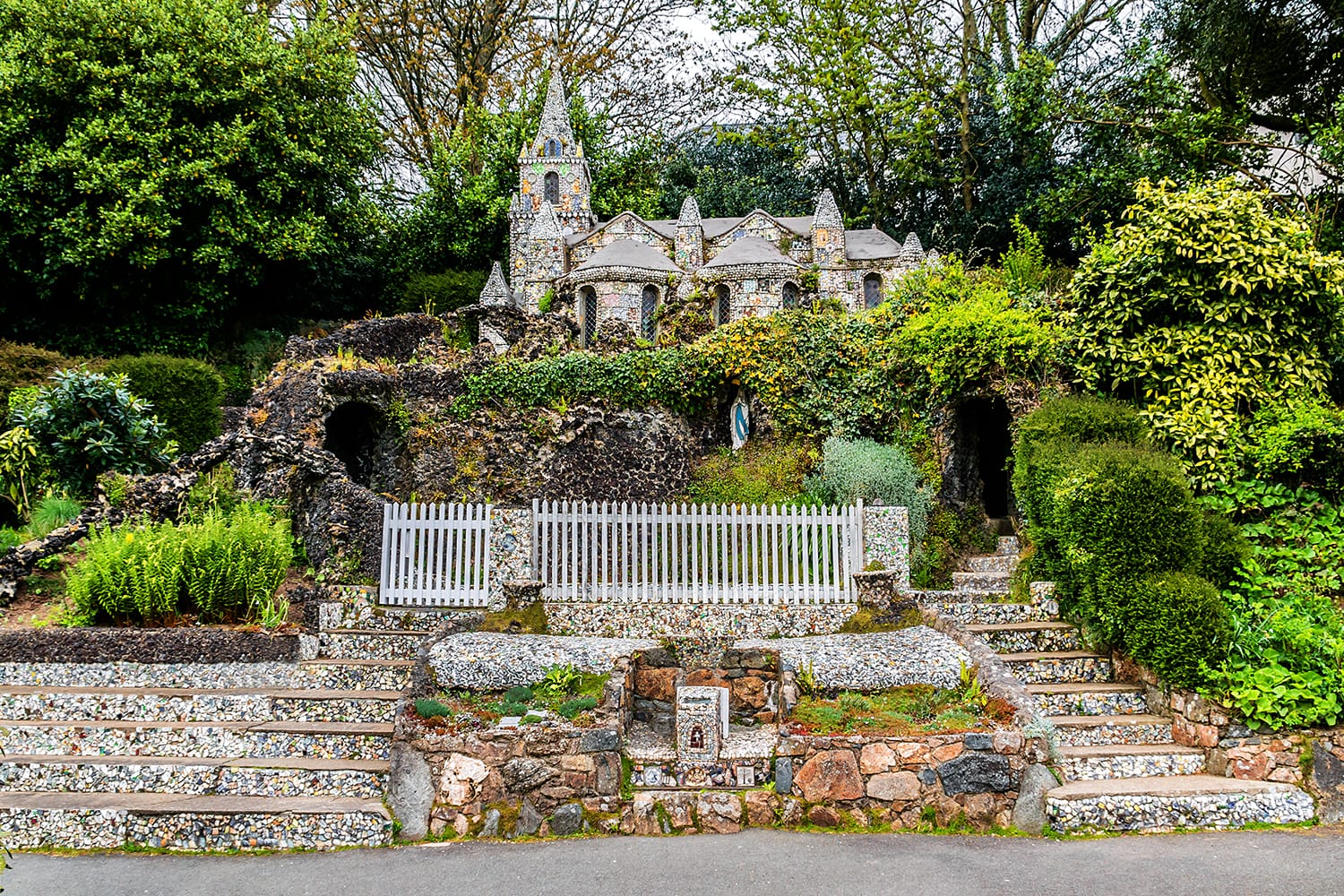
Admire the Design of the Little Chapel
A truly unique tourist attraction in Guernsey is the Little Chapel, just a few miles from Guernsey Airport.
Brother Déodat constructed this miniature church in 1914, modeling it after the famous grotto and basilica in Lourdes, France. Every inch of the building is decorated in pebbles, broken china, and other materials that make it a brilliant vision to behold. What Little Chapel visitors see today is actually Déodat’s third attempt at this project; the second version had to be partially demolished and rebuilt, as the bishop of Portsmouth was too big to fit through the doorway.
The Little Chapel runs solely on donations, making it one of the best free things to do in Guernsey. You can explore the small corridors and rooms while marveling at the ornate design of this nondenominational church, then stroll down a few walking paths around the exterior.
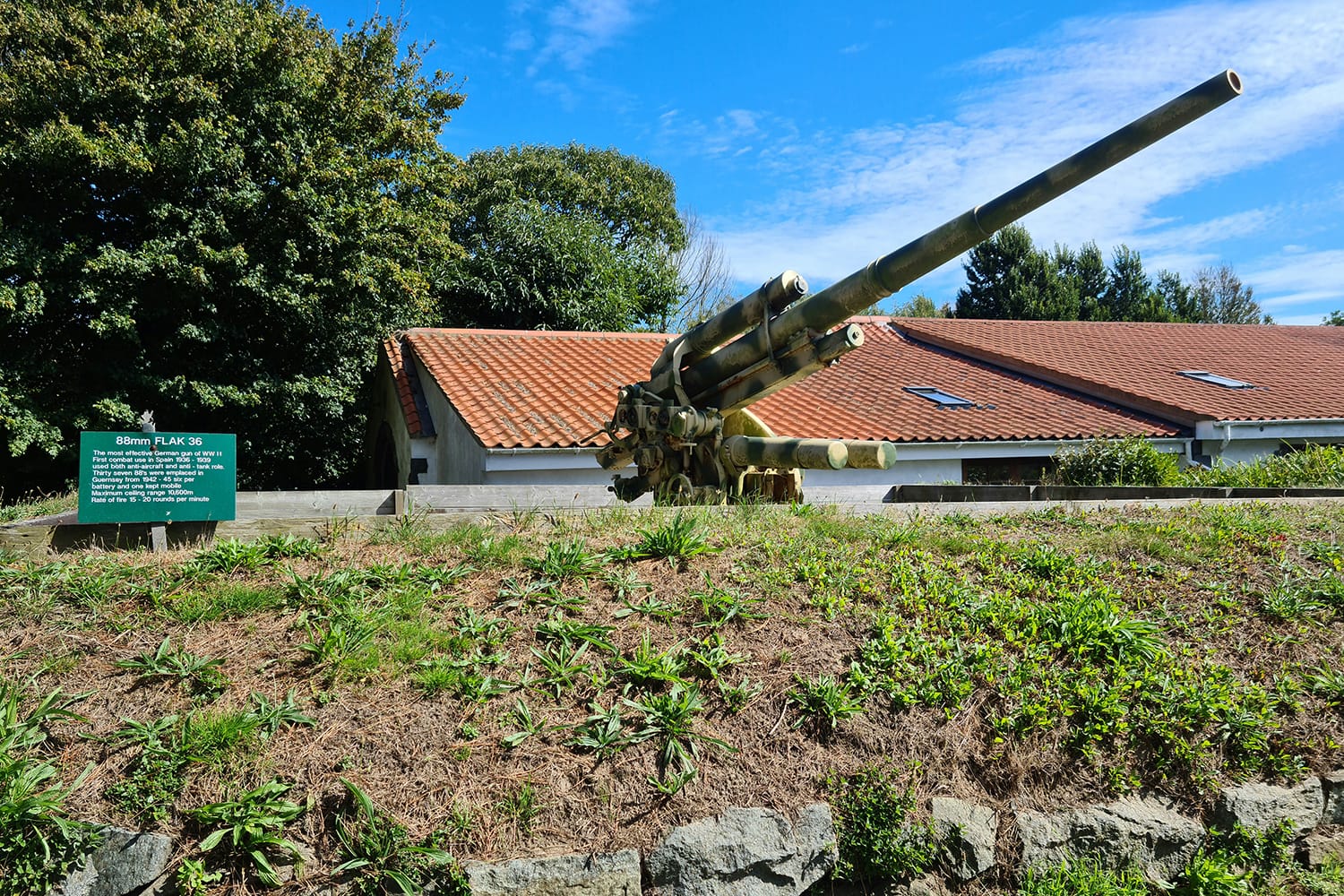
Learn Some War History at the German Occupation Museum
Although Guernsey is a self-governing British crown dependency, it was occupied by the Germans in World War II, and the island has some pretty interesting artifacts and structures left over from that time period.
The German Occupation Museum focuses mainly on what life was like during the occupation. It even has a replica of “Occupation Street,” where you can step back in time to walk down a street lined with authentic shop wares. The museum also houses several military artifacts, such as a Renault FT-17 tank turret, an anti-tank gun, and a four-wheel Enigma machine.
The museum is open seven days a week from 10 a.m. until 1 or 2 p.m., depending on the time of year.
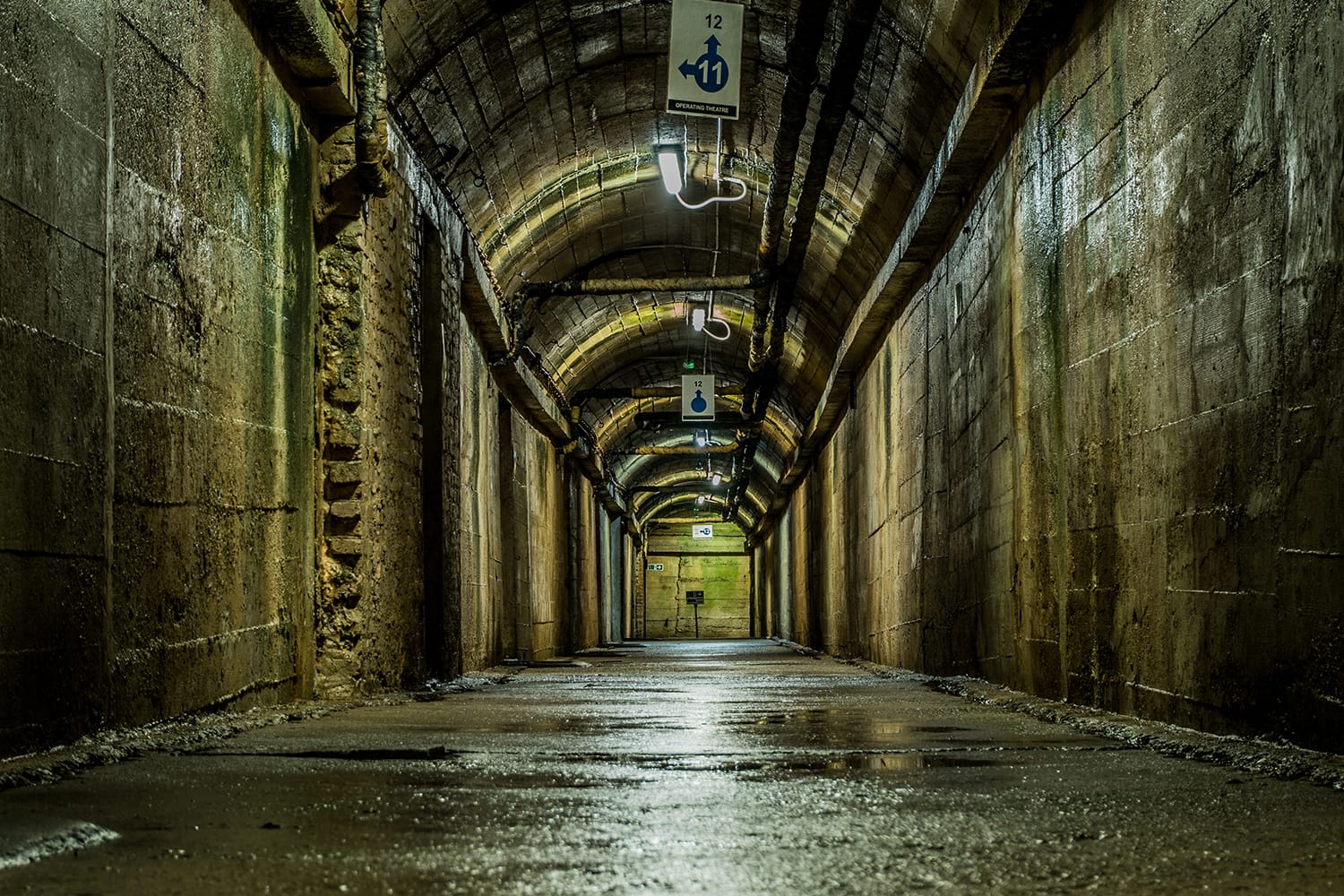
Wander the Tunnels at the German Underground Hospital
This is an absolute must-see in Guernsey for anyone with an interest in World War II.
With 75,000 square feet of tunnels, the German Underground Hospital is the Channel Islands’ largest WWII structure. While an impressive structure to be built by the Nazi Germans, it came at the cost of forced work by the Guernsey residents. The Germans used the tunnels for ammunition storage and as a hospital ward for their soldiers, with space to house up to 800 patients.
Today, the tunnels are open for the public to explore. You can wander the endless dark paths, haunting empty rooms, and an exhibit on the slave labor it took to construct massive structures on the island. It does get quite cold in the tunnels, so we recommend bringing a jacket.
Visit the Victor Hugo House
If you’re sightseeing in Guernsey between April and September, the Victor Hugo House should be on your itinerary.
Any fan of Les Misérables will know the book was written by French poet and novelist Victor Hugo. However, few know that he was exiled from France and lived for 15 years on the island of Guernsey. He finished writing Les Misérables at his home in St. Peter Port, Hauteville House. The house is now a museum showcasing Hugo’s eye for design and several of his letters, including some spicy love letters (he was a poet, after all).
It’s essential to book your ticket in advance, as the only way to see the house is with a guided tour that allows no more than 10 people at a time. The tour lasts an hour.
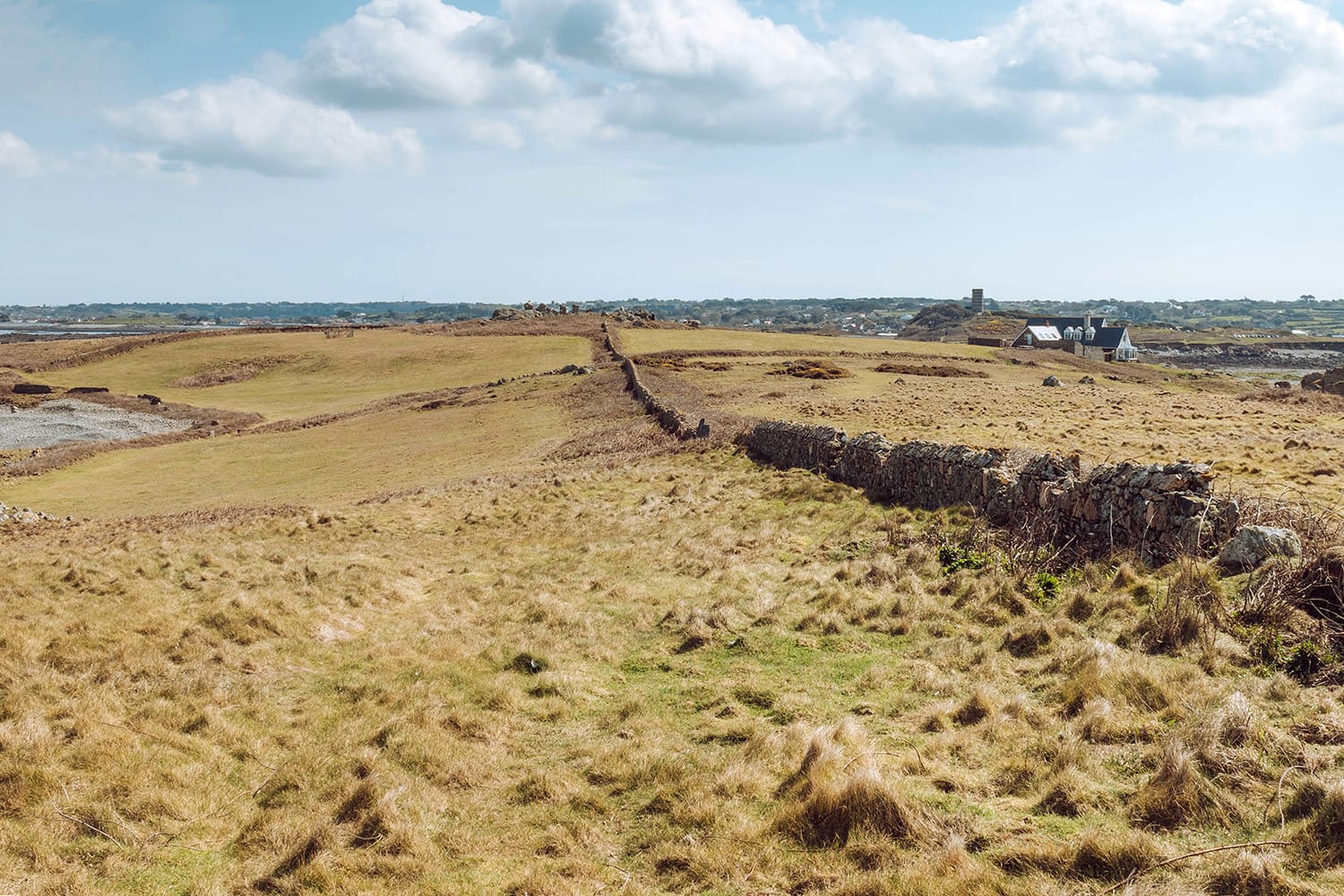
Explore the Island of Lihou During Low Tide
If you feel like a day of exploring, make your way to L’Erée Headland Nature Reserve. Here you’ll find abundant monuments and structures to explore, such as Fort Saumarez and L’Eree Gun Battery, as well as a small cave. If you explore the cave, known as Le Creux ès Faïes, hold on to your wallet: Local folklore says that this Neolithic chamber tomb is inhabited by fairies, and the first thing you need to know about fairies is that they love mischief.
One of the more popular things to do in the area is to wait for low tide and walk to Lihou. This beautiful nature preserve is a haven for bird-watchers, and if you’re lucky, you might just spot a peregrine falcon.
As you stroll across the small island, you’ll find the ruins of an ancient priory partially covered in vegetation. Keep an eye on the tides and your watch so you’ll make it back before the tide goes out. You might also want to bring your bathing suit and go for a plunge in the natural Venus Pool.
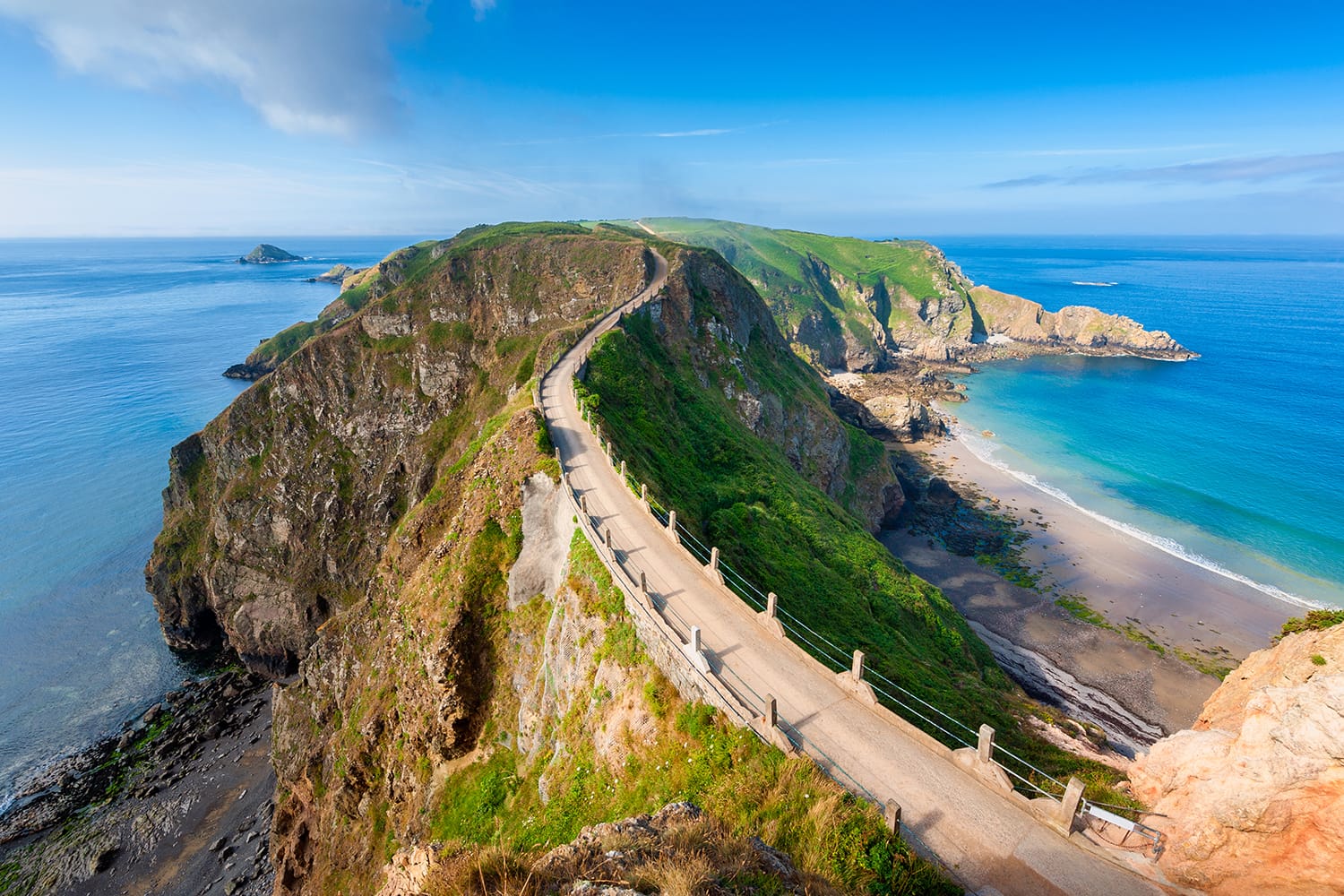
Take a Day Trip to Sark Island
If you want to feel like you’ve stepped back in time, head to Sark, the crown jewel of the Channel Islands.
This tiny island is famous for being one of the last remaining places on earth that only allows transport by horse, bike, or tractor. That’s right – no cars. You won’t have to paddle your way there, though, as the Sark Shipping Co. offers daily trips to and from the island.
With its rugged cliff lines and scenic walking routes, Sark offers incredible untouched nature. To make the most of the landscape, you can book an island excursion with Adventure Sark. Its activities include coasteering, sea kayaking through caves, archery, and even clay pigeon shooting. If you’re not so interested in adventure sports, consider hiring a carriage or wagon to give you a tour of the island, or rent a bike to explore the island on your own.
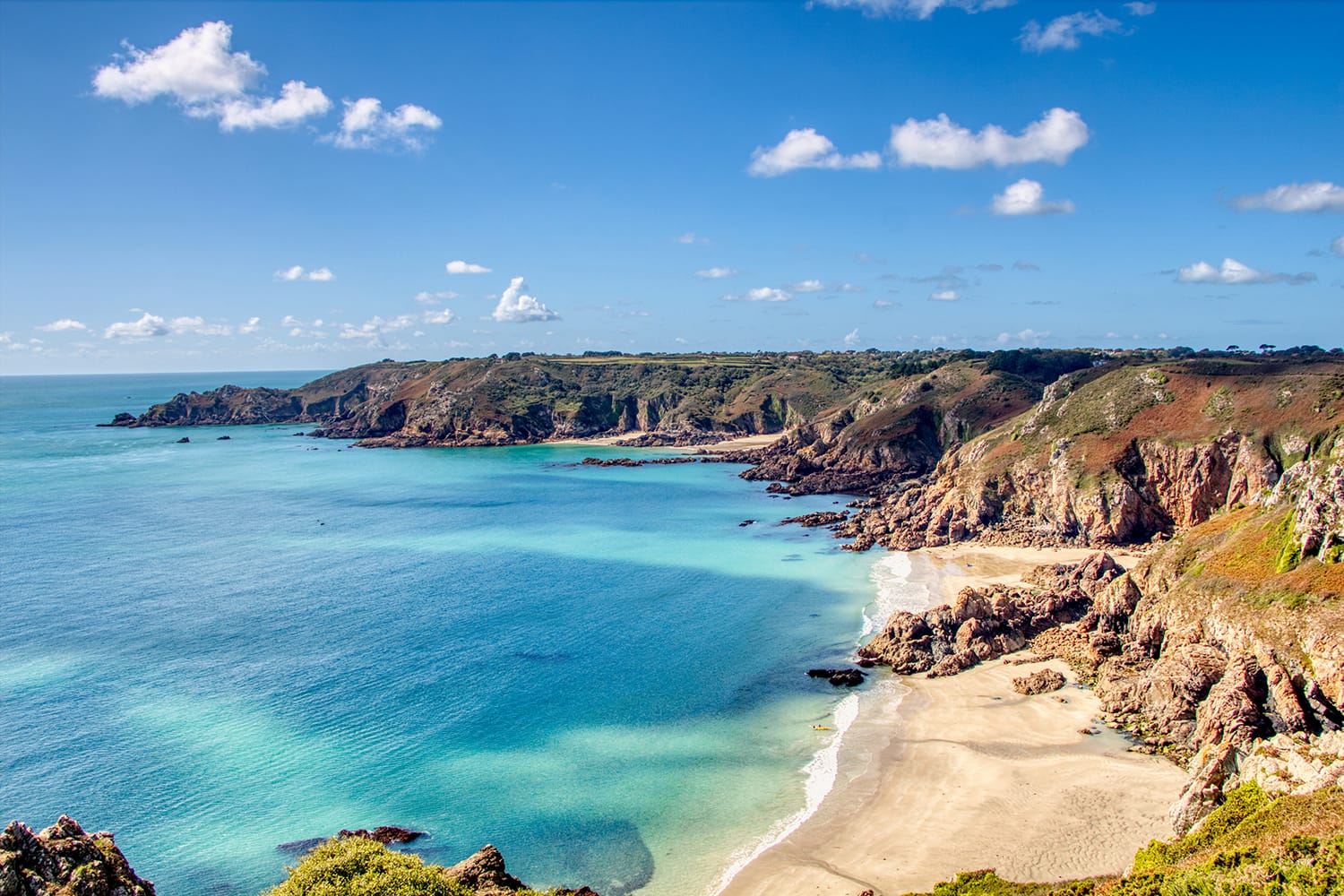
Go on a Guided or Independent Hike
Walking and hiking are pillars of Guernsey culture, and you might be surprised at how many ways there are to hike here.
Most of us think of hiking as a solo activity or something to do with a friend, but Guernsey makes it a community event. Every spring and fall, the island hosts festivals of guided walks, letting you choose from a wide range of coastal, inland, town, and nature hikes led by accredited guides. These walking festivals are a great way to get a feel for the island’s culture and to learn about its nature and history from knowledgeable locals.
Of course, you can also explore the countryside on your own. You have several popular hikes across the island to choose from, depending on what you want to see. If you’re looking for an easy hike with some prehistoric points of interest, check out this 4-kilometer route from Rousse Tower to Pembroke Bay. The trail passes several beautiful beaches, the Neolithic burial mound of Les Fouaillages, and a large chambered tomb, La Varde Passage Grave. For a moderate hike through nature, take this 5.2-kilometer trail, or check out this 13-kilometer coastal and inland trail if you want a harder hike.
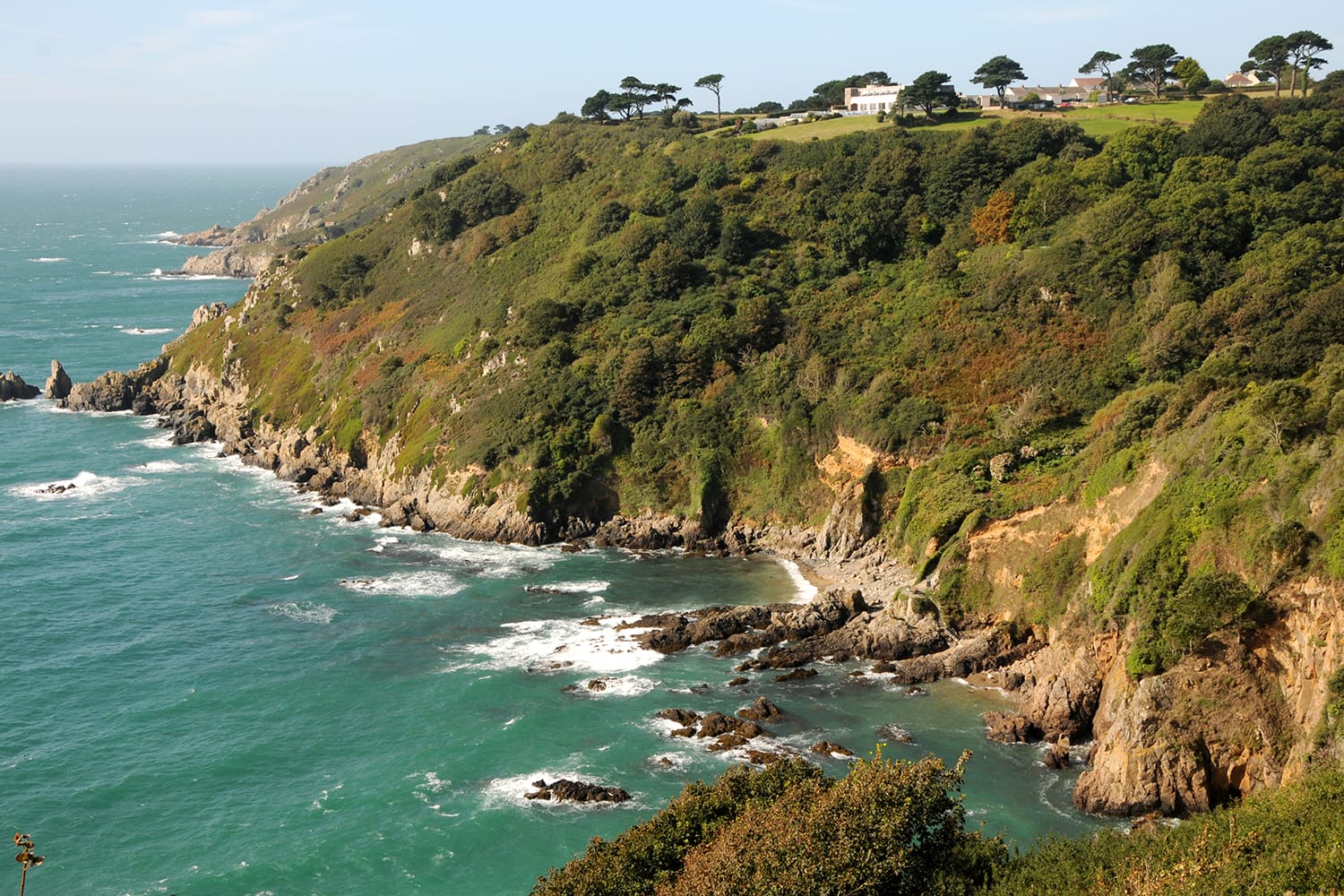
Take the Renoir Walk at Moulin Huet Bay
Famed impressionist painter Pierre-Auguste Renoir visited Guernsey in 1883 and fell in love with the island’s landscapes. He was so inspired by the rugged coastline, sandy beaches, and lush vegetation at Moulin Haute Bay that he painted 15 depictions of the terrain. You can even visit the exact viewpoint he captured in “View at Guernsey,” his most notable painting of the island.
Art for Guernsey has set up a permanent display at Moulin Huet Bay of picture frames outlining scenes Renoir painted during his month on the island. You can download a guide map here to see which pictures he painted at each location. After a leisurely walk along the Renoir path, head to the Moulin Huet Tea Rooms to enjoy a cream tea and one of the cafe’s famous crab sandwiches.
Enjoy the Activities at Oatlands Village
If you’re looking for a fun thing to do in Guernsey for the whole family, head down to Oatlands Village.
This unique tourist attraction offers fun for all ages. You can learn about the island’s old brick industry at one of the kilns, wander through thatched barns, play mini-golf, or even make your own pottery. There are also go-karts, trampolines, a toy store, a restaurant, and much more! With so much to do, it’s easy to spend a whole day in the village, which is open seven days a week all year long.
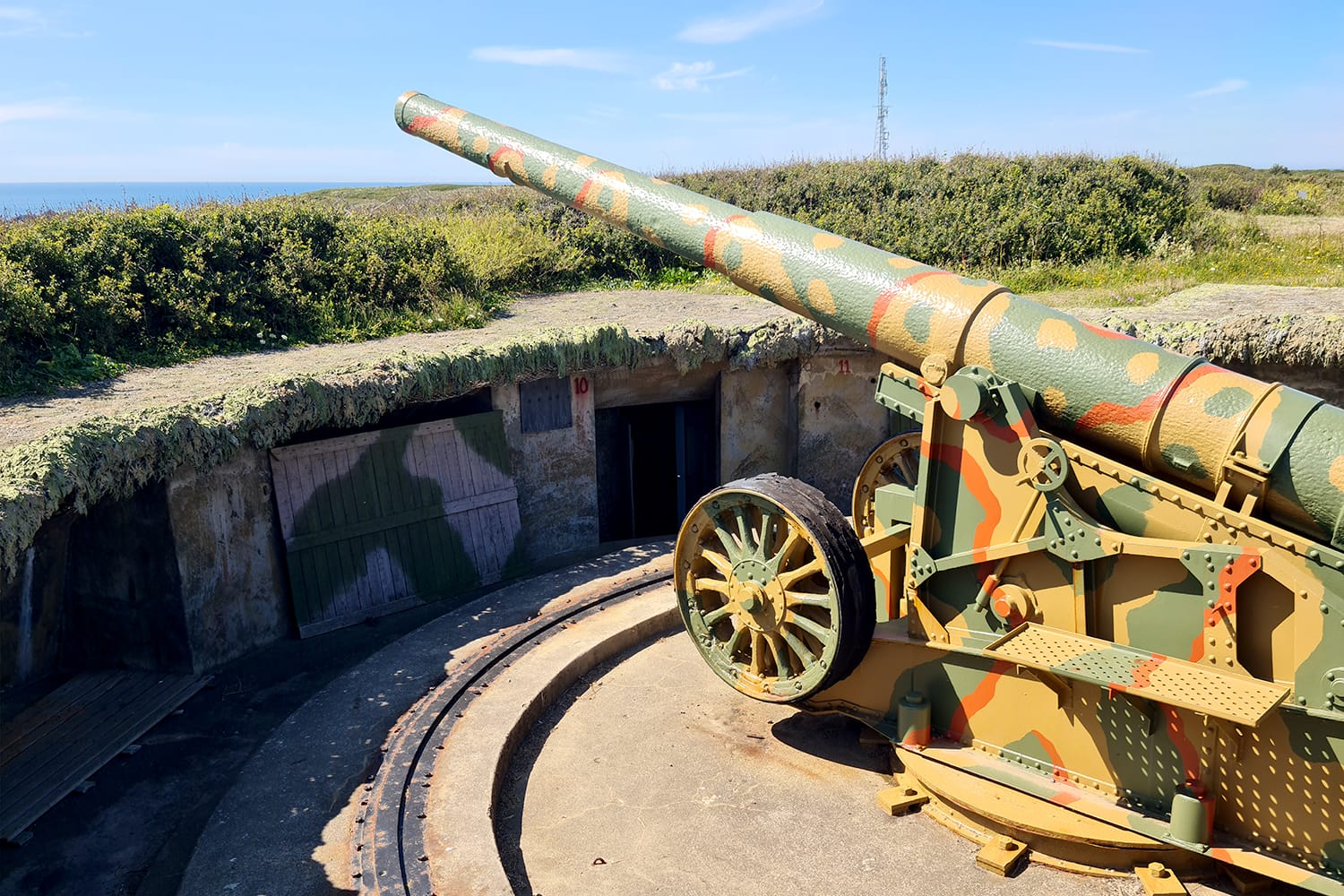
Watch the Firing at Batterie Dollman Gun Pit
Another fantastic Guernsey attraction for World War II enthusiasts is the Batterie Dollman Gun Pit, located on the western tip of the island.
When excavation started on the island’s coastal German batteries, many of the bunkers were well intact, so Guernsey was able to restore them to their wartime appearance. The most unique restored artifact here is a 10-tonne French gun, now the last of its kind in Europe, in the third gun pit at Batterie Dollman. You can tour the trenches and bunkers, including the ammunition storage. On Sundays in the summer, you can even see the restored gun being fired with blank charges.
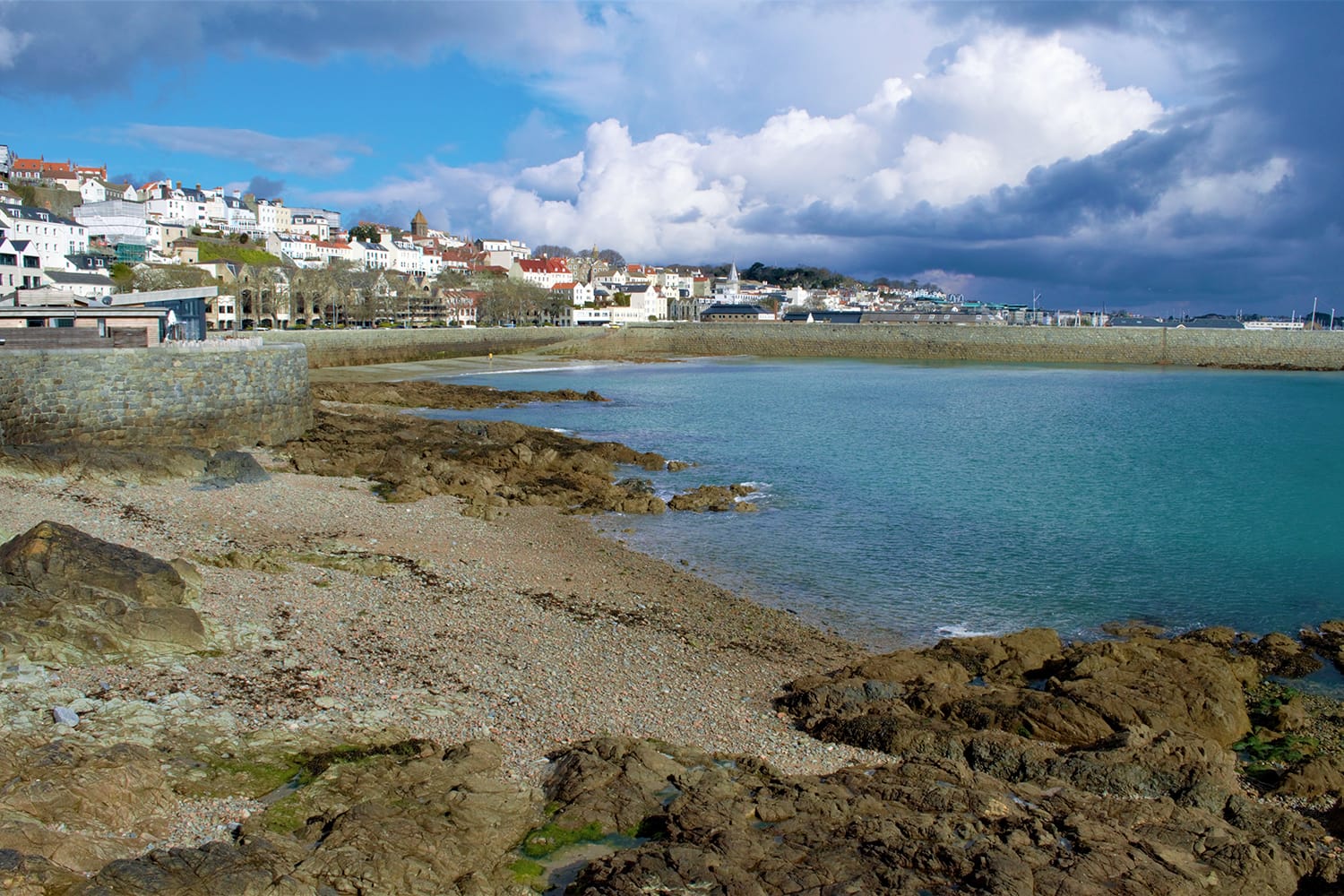
Take a Plunge in the La Vallette Bathing Pools
There’s no better way to cool off on a summer day than with a dip in the ocean. To that end, Guernsey residents – and notable visitors such as Hugo and Renoir – have enjoyed the bathing pools of La Vallette for over 150 years.
These enclosed saltwater pools in St. Peter Port offer the perfect place for the whole family to take a dip while enjoying views of the ocean and Castle Cornet. There are four coastal swimming pools to go around here, so you don’t have to worry about any one spot getting too crowded. Once you’re nicely cooled off, head over to the cafe for a cup of coffee and a bite to eat.
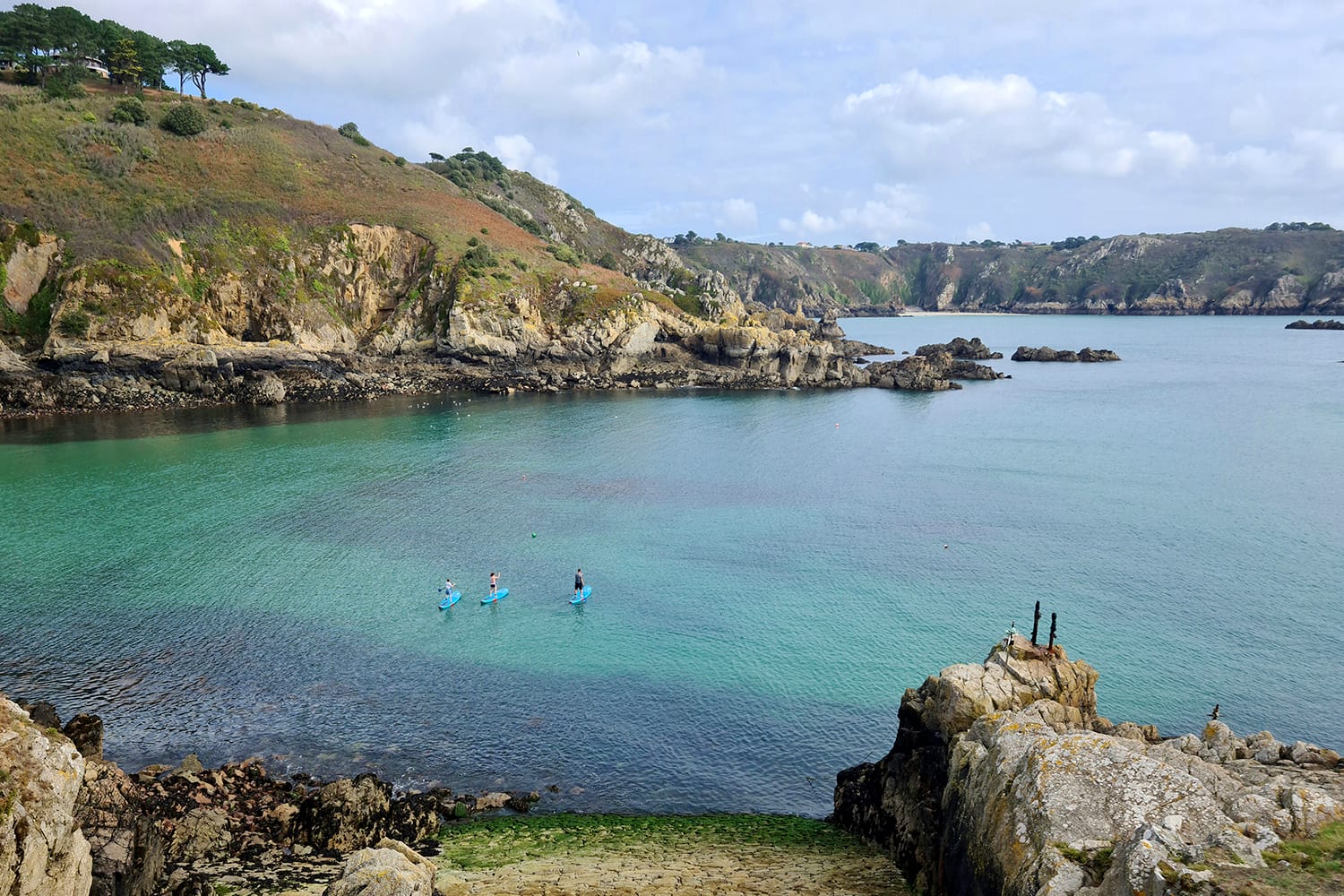
Get Out on the Water
With the endless opportunities for water activities in Guernsey, no holiday to the island is complete without at least one sea adventure.
If you want some help riding the waves, you can take a surfing lesson at the Guernsey Surf School or a tour of the island with JP’s Jetski Seafaris. Outdoor Guernsey also offers an array of activities and equipment rentals that get you in the water, such as coasteering (cliff jumping), kayaking, and stand-up paddleboarding. If you want to enjoy the water in a more relaxed manner, check out the many boat tours available from Island RIB Voyages.
Glimpse Traditional Island Life at the Folk & Costume Museum
If you want to learn more about the island’s interesting culture and history, there’s no better place to visit in Guernsey than the National Trust of Guernsey Folk & Costume Museum.
Located in the island’s largest public park, Saumarez Park, this interesting attraction showcases several restored buildings. Take a journey back in time through the exhibits of over 8,000 artifacts and tools that were used 250 years ago in everyday Guernsey life, including at school, at home, and in popular industries. After wandering through the museum, you can explore the Victorian walled gardens and the rest of the park.
That concludes our list of the top things to do in Guernsey. We’ve done our part and scouted out these amazing attractions; now it’s time for you to see how many you can fit into your itinerary. Good luck!
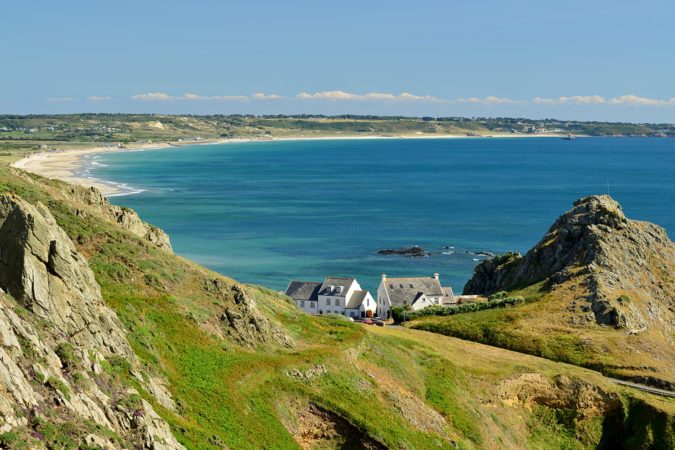
Abie
The worst clostrophibic place I have ever been! They are all ultra Conservative and very strangely love talking about anything German and their time during the German occupation. They have had a rather questionable relationship with the Germans. Tiny rock where there is no privacy and a bunch of gossiping of very low educated habitants.